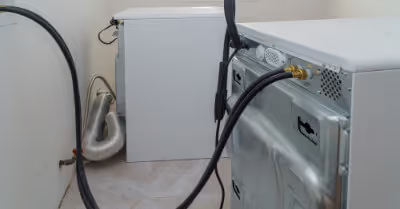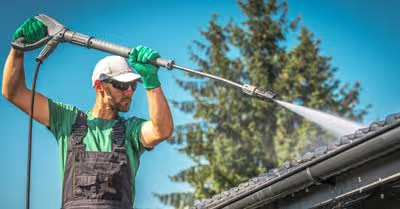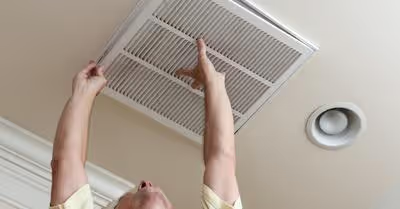Table of Contents
What is an Ant?
You were perhaps unfortunate enough to be stung by a fire ant as a kid, but do you know exactly what an ant is? Ants are small insects that have a head, thorax, abdomen and six legs. They’re social insects that live in colonies and divide their workloads. For instance, the ant that you usually see roaming around collecting water and food are worker ants who are protected by soldiers.
Ants often travel far and wide in search of water and food. They’re usually known to have a strong sweet tooth. That’s why they are particularly attracted to items such as sugar, fruit, and honey. Even though they can communicate with each other through their antennae, they often lay down pheromone scents to attract other ants to a food source.
Ant Castes
This may come as a surprise to you, but ants are very structured insects that operate in different castes. Each caste knows its role within the colony as highlighted below.
Worker – This caste consists of all female ants. They’re tasked with looking after the queen, taking care of the young ones, and foraging for food. They’re also tasked with maintaining and expanding the nest.
Soldier – They’re all female but much larger than the worker ants. They have bigger heads and stronger jaws than the worker ants. Their main responsibility is to protect the colony but can use their strong jaws to help cut and carry large objects.
Flying Ants – Sometimes referred to as Alate, this is another female-only caste. They have two pairs of wings, which are different in size (the front wings are larger than the back wings). They largely fly from the nest in the summer to start new colonies (probably within your home). Once they’ve built the nest, they clip their wings and use them as a source of food for the new colony.
Winged Drone – These are male ants in the colony. And because their only job is to reproduce, they’ll fly off with the flying ants to start the new colony. They’ll die once they’ve mated.
Types of Ants
There are several different types of household ants. Here are the most common ones.
Carpenter Ants – Any discussion about the differences between ants and termites is incomplete without the mention of carpenter ants. Well, this is because a huge part of the confusion between ants and termites arises from the fact that carpenter ants act similar to termites when damaging your property. While carpenter ants do not eat wood, they burrow in it and feed on the fungal decay that arises when the wood begins to rot. A key indication of knowing that your home is infested by carpenter ants is the wood shavings. Even though they do consume wood like termites, they’ll instead dispose of the excess wood at the entrance of their nests. Keep in mind that you can find carpenter ants anywhere within your home but they prefer window frames and areas near water sources.
Black Ants – You’ll find them in your home because they’re looking for food. This is why they tend to nest near food and water sources but can also be found beneath the carpet by the doorway or inside the wall.
Acrobat Ants – They are usually black, black and red or dark brown and have a heart-shaped thorax. They infest outdoor areas within rotted and moist wood such as logs, tree stumps, decks, and fences.
Pharaoh Ants – These reddish-brown ants are very tiny and can enter your home to feed on sugar, jelly, fruit juice, grease and more.
Fire Ants – These reddish-brown ants can enter your home through holes or cracks. However, they love outdoor areas within mulch and are likely to build large mounds of soil to nest in.
Pavement Ants – Brown to black, they can multiply very quickly in your kitchen or patio. They usually feed on meat, honeydew from aphids, dead insects, and grease.
Are Ants Dangerous and How Destructive are they?
While Pharaoh ants can transmit disease bacteria, this is very rare. The biggest threat, however, comes from fire ants sting, which poses danger to many homeowners. Nonetheless, ants are generally harmless.
Although ants may not cause much damage (if any at all) to your home, they can still weaken your wooden structures and can loosen the soil around your home over a substantial amount of time. As a homeowner, it’s advisable wary particularly about carpenter ants as they can cause serious structural damage and home destruction.
What are Termites?
Like ants, termites are six-legged insects with a head, thorax, and abdomen. They vary in sizes and can range from tiny to large. Like ants, termites have a caste system that is pretty much similar to the ant caste. Termites can cause serious damage to your home as they don’t just live in the wood but also consume it. They can live in the soil while building tunnels to access the woods within your home.
Types of Termites
There are several species of termites, but here are the most common ones.
Subterranean Termites – They tend to bury themselves into the soil before invading wood from the ground or through mud tubes built by the relentless worker termites. So any mud tubes stretching from the soil into a crack or an opening of your home should be a red flag that your home is termite infested.
Dampwood Termites – They live in moist and rotting wood. They require access to free water for survival so you’re likely to find them in old trees and logs or wood near water.
Drywood Termites – They generally prefer wooden structures or sturdy wooden poles that are sealed from moisture. That being said; do not be surprised if you find them living within your wooden furniture.
Are Termites Dangerous and How Destructive are they?
While termites can cause big holes in your wallet, they’re necessarily not going to bite you, your loved ones or pets. Nutritionally speaking, living beings offer nothing to termites so they’ll just stick to the cellulose that they obtain from wood, paper, and such products.
In terms of destruction, it’s reported that termites cause an estimated $5 billion in property damage to homes in the U.S. annually. For this reason, termites (particularly subterranean termites) can cause serious damage to your home. Subterranean termites are widely considered as the most destructive. This is because they can fester underneath your home without you having any idea that your home is infested. In other words, destruction can occur even for years without your knowledge.
So what are the Differences between Ants and Termites?
Things can get a little tricky if you do not know how to differentiate ants and termites. And because there are several ways to differentiate the two insects, let’s look at the key differences.
Body Differences
Waist - One of the most outstanding body features of an ant is the existence of a pedicel. This is the thin section that separates the thorax and the abdomen. In other words, you can easily see the distinct separation of their body parts. They also have thin and pointed abdomens, which give them an hourglass shape.
On the contrary, termites do not have the pedicel. Instead, they have thick and rounded abdomens, which make it quite difficult to distinguish their body section. This is why they appear straight or rectangular with nearly the same thickness from their head down to their body.
Antennae - Ants have single-jointed and elbowed (or bent) antennae. The antennae stick sideways since they’re attached to the sides of the ant’s head.
Contrarily, termites have straight but short antennae with a string of tiny beads and are pointed directly in front of them. These tiny beads give the antennae rough edges, which are somewhat difficult to notice with naked eyes unless you’re very familiar with insects.
Wings – Ants have four wings that are distinctly different in size. The front pair is larger than the back pair. Ant wings are typically the same length as the ant’s body and are shorter than termite wings. Ants often feed on their wings, so you’re unlikely to find them (wings) within your home.
Like ants, termites have four wings. However, they’re precisely the same length and shape. The wings are almost twice the size of the termite’s body. Keep in mind that you’ll know that your home is infested by termites if you find discarded silvery wings that resemble fish scales in various places such as doorway, patio or window sills.
Diet Differences
Termites may be termed as herbivores as they tend to feed on cellulose; a nutrient-rich substance found in plants and wood. This is why they mainly feed on wood, paper or any other cellulose-rich products. Contrariwise, ants are omnivores and mainly feed on nectar, sugar, other insects, as well as various types of food debris within your home. In short, ants will feed on just about anything, but not wood (they only use this for shelter).
Life Cycle Differences
Termites have three life cycle stages: egg, larvae (nymph), and adult. Termites can survive for a few years while the termite queen can live for decades. In terms of the reproductive cycle, fertile termites fly out of their colonies to mate and establish new colonies. Although termites lose wings after mating, both male and female continue living together to build and expand their new colonies.
On the other hand, ants have four life cycle stages: egg, larva, pupa, and adult. While worker and soldier ants live for a couple of months, the ant queen can live for several years. Like termites, fertile winged ants fly out of their nests to mate and establish new colonies during warm months. However, the male ants typically die after the mating sessions.
Behavioral differences and Hiding Places
Both ants and termites are social insects that live in large colonies with designated castes. Each caste has an important role to play in the colony. Ants and termites are likely to enter your home through minute openings and cracks in the foundation. They tend to hide their colonies under the floorboards or inside the walls. It’s, therefore, vital to look into such areas when eradicating ant and termite infestations.
Termites are generally found in lumber, wood debris, stumps, decaying trees, and wooden parts of any structure. You should thus look for termite colonies in such areas, as well as in bookshelves, kitchen drawers, and even in swimming pool liners. Remember, termites can cause serious structural damages since they feed on wood. They also chew on insulation and other home materials in search of the resources that they need to build a nest and safeguard the colony.
Depending on the species, ants can hide behind large appliances, in cabinets or even underneath your floor. For instance, carpenter ants naturally inhabit wooden parts of structures even though they do not feed on wood. This doesn’t, however, mean that they cannot cause serious structural damages.
Again, ants are much easier to find than termites since they don’t hide in far-flung places. Generally, ants live in nests or holes that they dig out of the ground. Such abodes are quite visible and easily noticeable. On the contrary, termites do not build such structures. So if you see mounds or piles of dirt, you’re probably dealing with ants. This because ants tend to keep their nests very clean and will dump debris in a pile far away from the nest.
Conclusion
Although termites and ants may look quite similar to the untrained eye, they are very different pests that can leave your home in tatters. That’s why understanding and knowing the difference between the two is a crucial step in effective and successful pest control.
If you notice signs of ants and termites in your home, the key is to take immediate action. There are several steps to eradicating these little guys from your beloved home without causing a huge dent on your finances. The first step is to know how to differentiate between the two sneaky pests.
Recent Articles
















